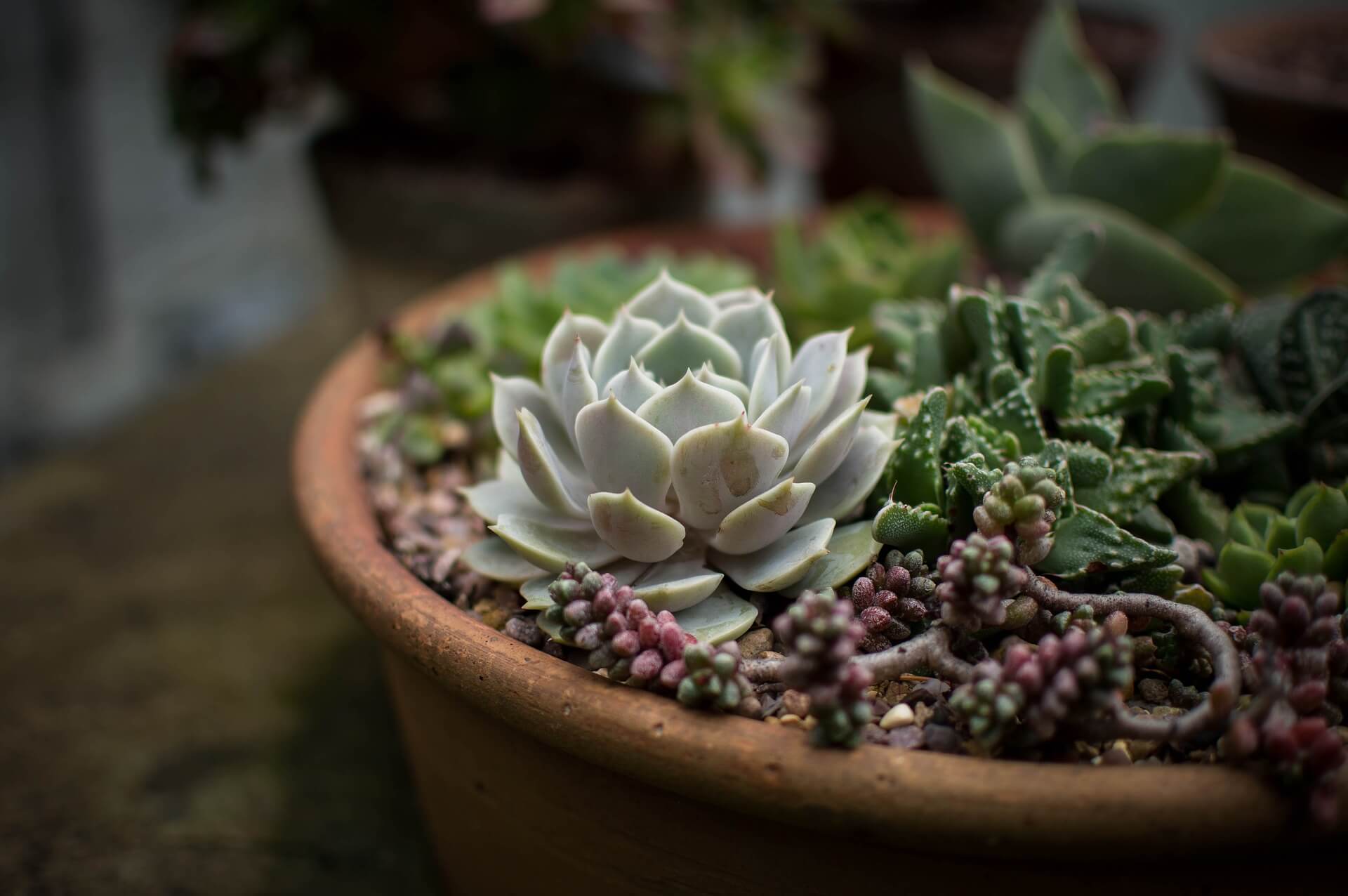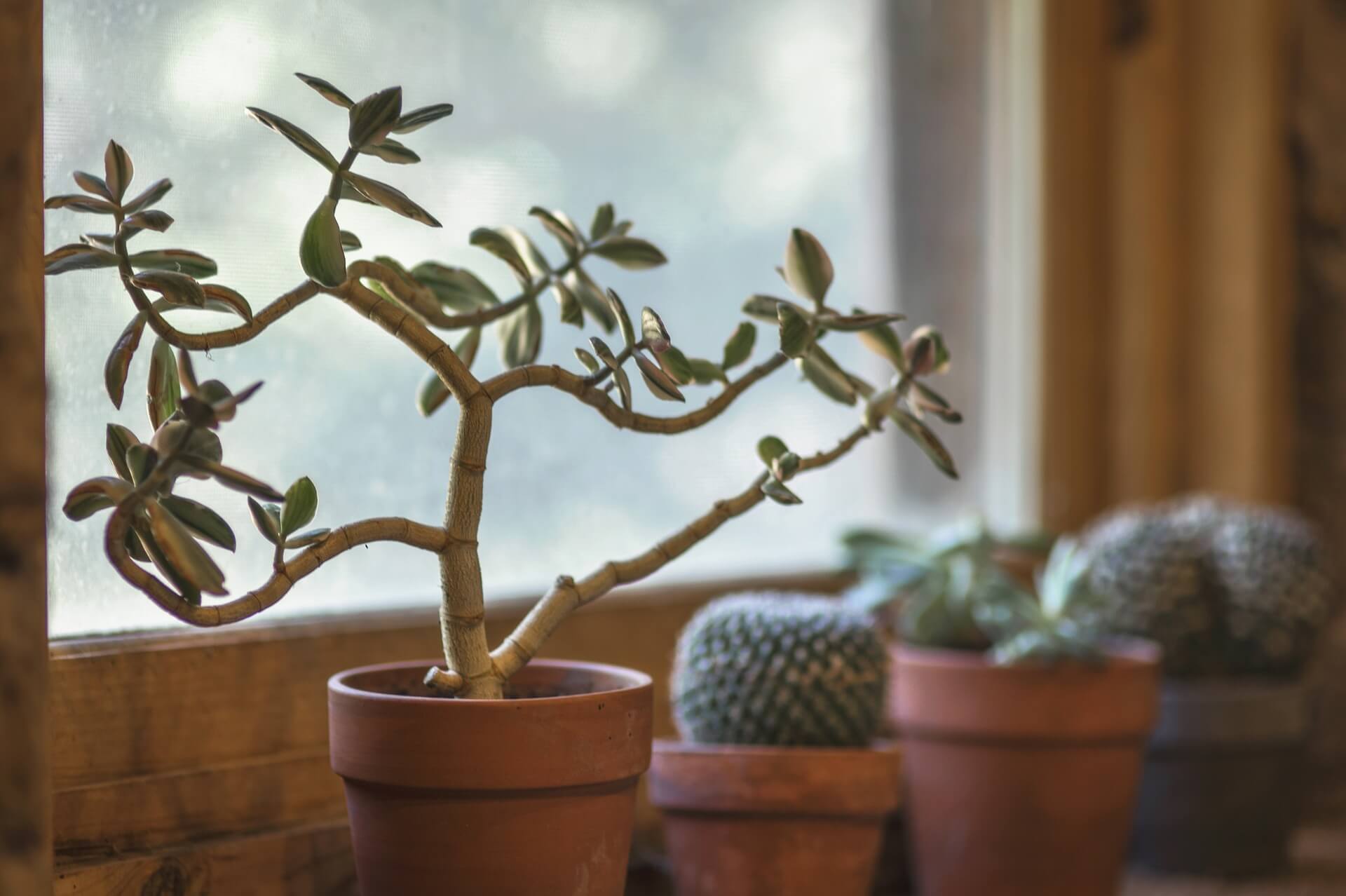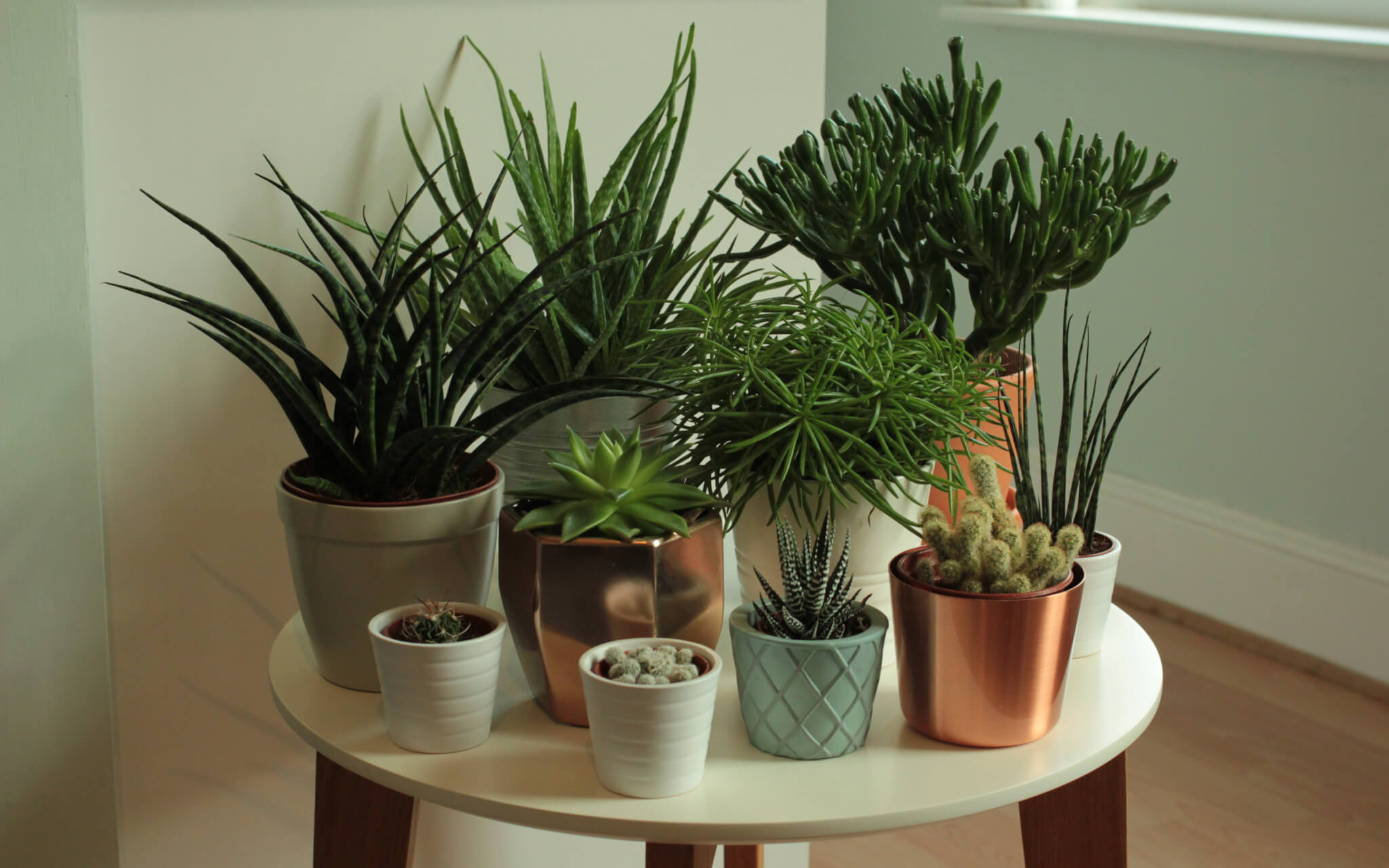How to Create Your Indoor Succulent or Cacti Garden
House plants make a wonderful difference to your home – they improve air quality, de-stress and of course look beautiful. Succulents are one of the best kind of plants to grow as they’re some of the most tolerant and easy-to-care-for varieties out there. They come in a huge range of sizes and eye catching forms to suit any space or design you have in your home. Growing succulents indoors is hugely rewarding and, as you’ll see, very straightforward.
Shop our range of succulents online.
What are succulents?
Succulents are plants which store moisture in thick fleshy leaves or stems. Cacti are one type of succulent, but they come in many forms, from trees to tiny spikes. Succulents originate from all over the world: Africa, South Africa, the Alps, Central America and South America. So they can thrive in many different conditions, particularly indoors where the temperate and humidity is close to their native habitat.
Planting succulents indoors
Pots
Succulents suit containers as they have shallow roots. This also makes them great for grouping multiple plants in one pot, if that is the look you want to go for (plus it makes them easier to water). Just aim for similar sized plants that have common watering and light requirements – do your research! Drainage is crucial when choosing your container as succulents don’t like to sit in moist soil. Use drainage holes where possible, or add small stones to the bottom if not. You can also plant in terrariums but drainage is often an issue. Terracotta is the best material as it absorbs some of the moisture.

Soil
The key for succulent soil is to make sure it’s well draining. You can buy specialist cactus or succulent compost, or make it yourself. A good mix is 1 part well draining potting compost, 2 parts coarse sand and 1 part perlite. This should ensure water runs through the soil easily.
Watering
With succulents it’s best to err on the side of caution and under- rather than over-water. Watering once every two weeks is usually enough, even less in winter. Give it enough water to soak the soil, but ensure it can thoroughly drain before the next watering. If using a container with poor drainage, like a terrarium, only give a little water to dampen the soil. If the roots sit in water they will rot and kill the plant. With little water the plants can draw on moisture stored in the leaves and grow less, which is fine for small containers.
Placement
Succulents like sun, usually full or partial – check the requirements for the species you have. If the leaves go brown from sunburn, move the plant out of direct light. In some climates you can move them outdoors in summer, but in the UK they will need to stay inside year round.

Pest control
Good air circulation is crucial for avoiding pests, so think about this when you’re potting and placing your succulents. Terrariums in particular can limit air flow. Succulents are generally good against pests, but watch out for gnats, mealybugs and spider mites on the leaves – often these can be wiped off or sprayed with non-toxic pesticide.
Things to watch out for
Naturally the lower leaves will die back and be replaced by new leaves at the top of the plant, so don’t worry unless the top leaves are dying. Most succulents go dormant during winter, so avoid adding fertiliser then as they will not naturally be growing.
The best succulents to try
Most succulents are easy to grow at home and won’t require a lot of effort. But some extra tolerant and attractive ones to try include sansevieria, jade, aloe vera, echeveria, zebra plant, pincushion cacti, string of pearls and crown of thorns. Or if you don’t want to grow your own, you can try artificial succulents instead.

–
George works in the Primrose marketing team. As a lover of all things filmic, he also gets involved with our TV ads and web videos.
George’s idea of the perfect time in the garden is a long afternoon sitting in the shade with a good book. A cool breeze, peace and quiet… But of course, he’s usually disturbed by his energetic wire fox terrier, Poppy!
He writes about his misadventures in repotting plants and new discoveries about cat repellers.
